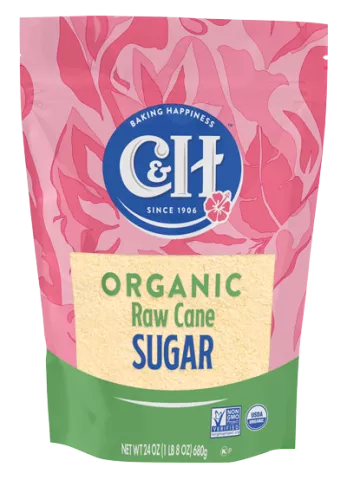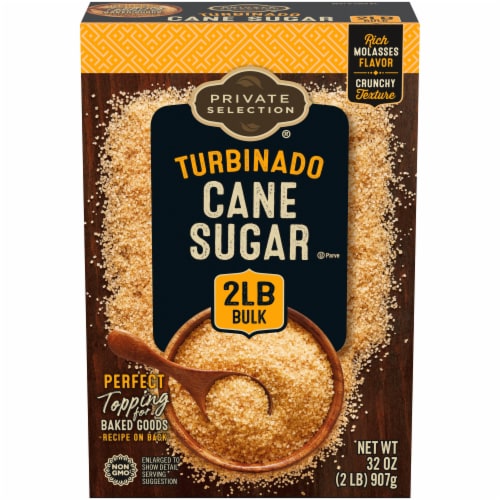The Trip of Cane Sugar Processing: From Harvest to Crystals
The Trip of Cane Sugar Processing: From Harvest to Crystals
Blog Article
Comprehending the Vital Techniques and Technologies Employed in Modern Walking Cane Sugar Handling
The advancement of walking stick sugar processing has been considerably formed by the integration of sophisticated strategies and technologies that attend to both performance and sustainability. Enzyme-assisted removal and sophisticated refining techniques have actually changed yield optimization, while automation helps with functional integrity. Furthermore, the emphasis on sustainable practices shows an expanding understanding of ecological influence. As we explore these crucial improvements, it comes to be essential to analyze exactly how they not just improve manufacturing yet additionally align with broader market patterns and customer needs, increasing questions about the future of sugar processing and its effects for global markets.
Historical Context of Cane Sugar Handling
The historic context of walking stick sugar handling exposes an abundant tapestry of agricultural technology and cultural exchange that has actually formed its advancement over centuries. The process of drawing out and refining sugar gained energy in India, where approaches for condensation were perfected around the 6th century.

Advanced Removal Strategies
Efficiency in walking cane sugar removal has seen significant advancements, driven by the requirement for greater yields and lower production prices. Standard methods have actually developed, offering way to ingenious modern technologies that enhance the effectiveness of the removal procedure. One remarkable development is the usage of enzyme-assisted removal, in which specific enzymes break down cell walls and release even more sucrose from the walking cane fibers. This strategy not just increases sugar yield however additionally lowers the power required for processing.
Furthermore, the adoption of membrane filtration technologies, such as nanofiltration and reverse osmosis, has transformed the separation of sugar from impurities. These methods enable for the careful permeation of sugar molecules while retaining larger impurities, simplifying the extraction procedure and lessening waste.
Additionally, the combination of constant extraction systems has actually caused enhanced operational efficiency. Cane Sugar Processing. These systems keep a continuous flow of cane product, making sure optimal extraction problems and decreasing downtime related to set handling
Innovative Refining Technologies
Refining methods in cane sugar handling have undertaken a transformative shift, driven by the need for higher pureness and improved product top quality. One of one of the most noteworthy innovations is the adoption of membrane layer filtering modern technologies, such as ultrafiltration and nanofiltration. These processes properly eliminate contaminations and colorants without the need for substantial chemical treatments, consequently maintaining the sugar's natural taste and enhancing its charm.
An additional substantial development is making Resources use of ion exchange materials, which allow for discerning elimination of unwanted ions from sugar options. This modern technology not only boosts the overall pureness of the end product yet additionally adds to minimized waste and ecological influence.
Additionally, improvements in adsorption strategies, utilizing activated carbon and other innovative products, have actually proven efficient in decolorizing sugar options while keeping optimum quality. The integration of these ingenious refining innovations makes certain that manufacturers can produce refined sugar with remarkable clearness and preference, fulfilling the advancing choices of customers.
Automation and Control Systems
Recent developments in refining innovations have actually led the means for significant enhancements in automation and control systems within walking cane sugar handling facilities. These systems make use of advanced software program and hardware to boost operational effectiveness, reduce human error, and make certain consistent product top quality.
Modern automation integrates different parts, consisting of sensors, actuators, and programmable reasoning controllers (PLCs), enabling real-time monitoring and control of vital procedures. For instance, pressure, temperature level, and circulation rates can be precisely regulated throughout removal, explanation, and crystallization phases, enhancing performance and decreasing waste.
Additionally, progressed data analytics and artificial intelligence algorithms play a my company critical role in predictive maintenance, allowing operators to expect devices failings before they occur. This proactive strategy not just minimizes downtime however additionally prolongs the this page lifespan of equipment.
Furthermore, automation helps with the implementation of Sector 4.0 concepts, equipping sugar mills to achieve better connectivity and information exchange across procedures. As a result, decision-making ends up being more agile and educated, ultimately improving the overall competition of walking cane sugar manufacturing. With these improvements, the industry is well-positioned to fulfill expanding worldwide needs while preserving functional quality.
Sustainability Practices in Sugar Production
Sustainability practices in sugar production have ended up being increasingly essential as the sector looks for to stabilize financial stability with ecological duty. As consumer awareness expands concerning the ecological effects of farming practices, sugar producers are taking on ingenious methods to reduce their ecological footprint.
One significant strategy is the implementation of precision agriculture methods, which make use of information analytics to maximize resource use, such as water and fertilizers. This minimizes waste and minimizes the effect on regional ecosystems. Furthermore, numerous manufacturers are transitioning to renewable resource sources, such as biomass from sugarcane byproducts, to power their operations, therefore reducing reliance on nonrenewable fuel sources.
Water administration practices are likewise essential; rainwater harvesting and reliable irrigation systems help alleviate water scarcity problems. Cane Sugar Processing. In addition, integrated insect administration strategies reduce chemical use, promoting biodiversity and dirt wellness
Business social responsibility efforts are emerging, with companies purchasing local areas and making certain reasonable labor techniques. By welcoming these sustainability techniques, the sugar industry not just boosts its reputation but likewise adds to an extra sustainable farming landscape, leading the method for future generations.

Final Thought
In recap, contemporary walking stick sugar handling incorporates a range of innovative methods and modern technologies that significantly enhance sustainability, performance, and yield. Collectively, these innovations position the walking cane sugar industry to meet contemporary demands while resolving crucial global obstacles.
The development of walking stick sugar handling has been considerably formed by the combination of advanced techniques and technologies that address both performance and sustainability.The historic context of walking stick sugar processing reveals an abundant tapestry of farming technology and social exchange that has actually shaped its growth over centuries. Innovations in milling and refining arised, laying the foundation for modern walking cane sugar handling.Refining techniques in walking stick sugar handling have actually undergone a transformative shift, driven by the need for greater purity and improved product quality.In recap, modern-day cane sugar processing includes a range of innovative techniques and technologies that considerably enhance return, sustainability, and efficiency.
Report this page